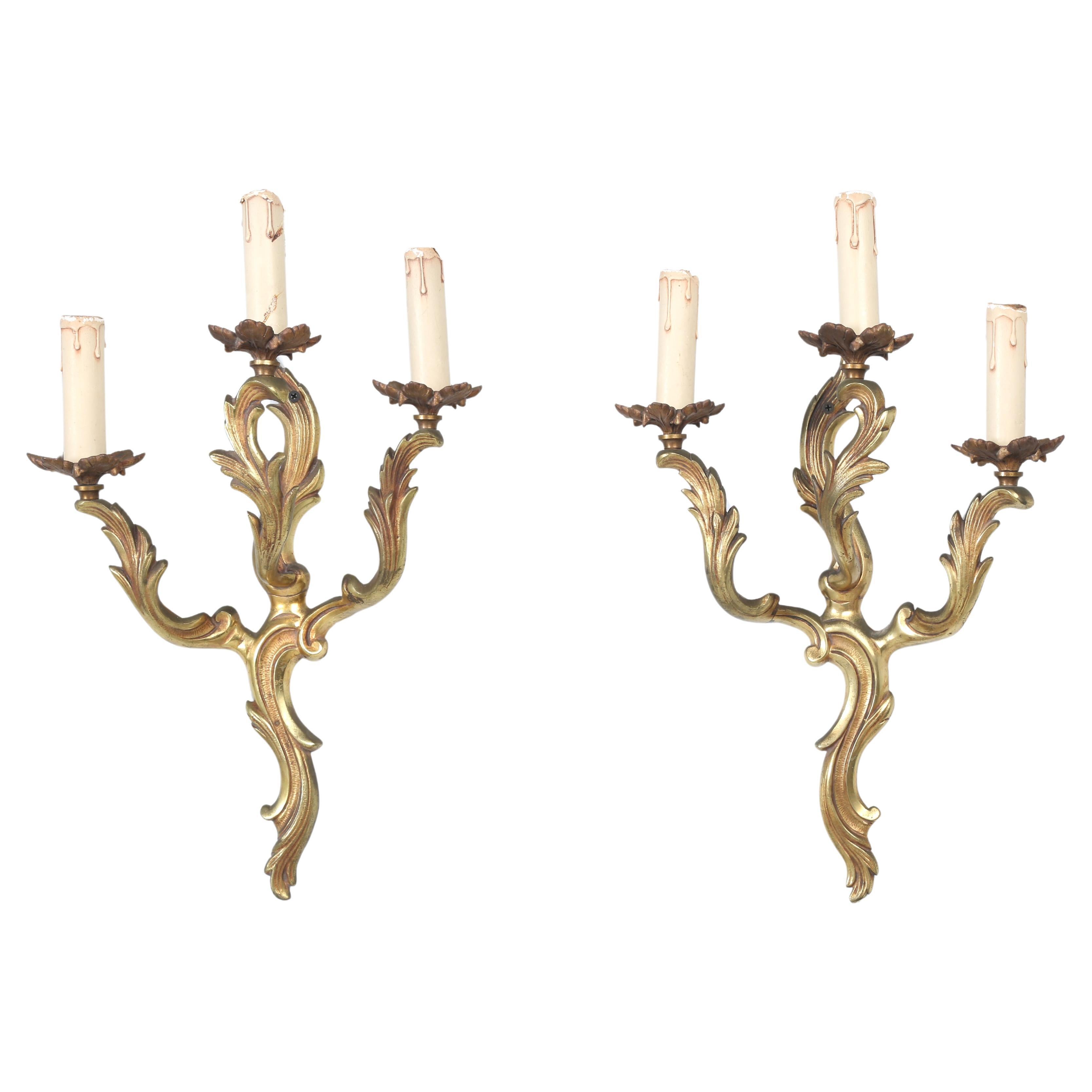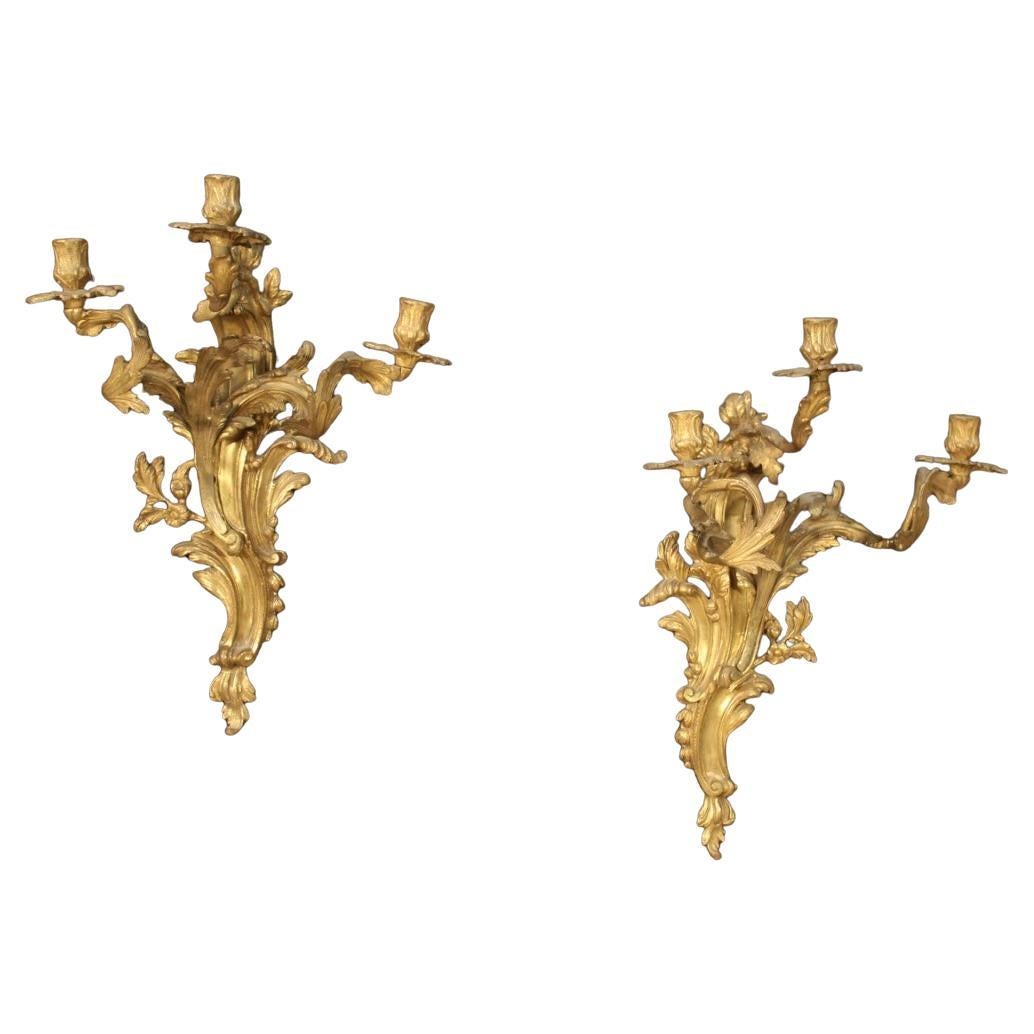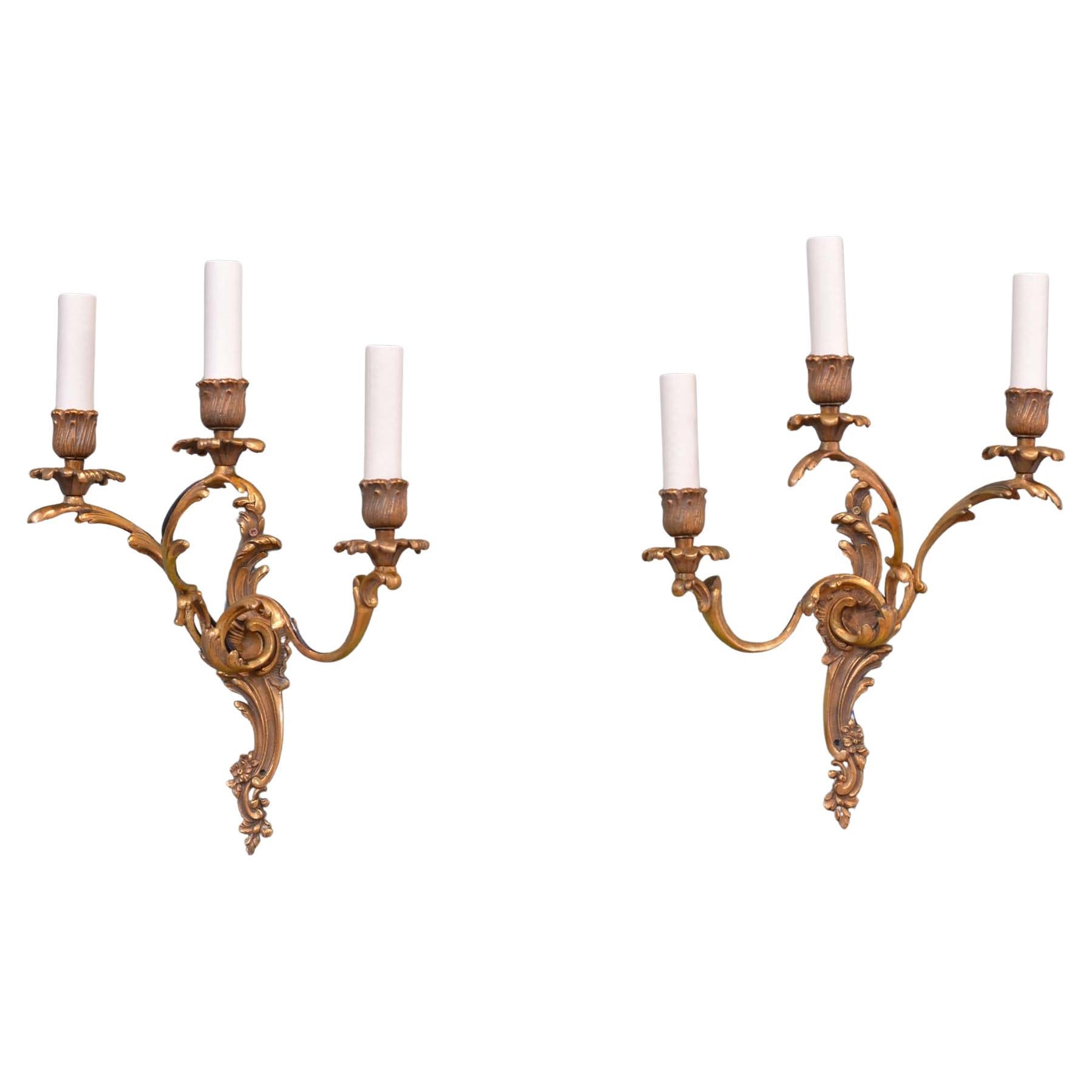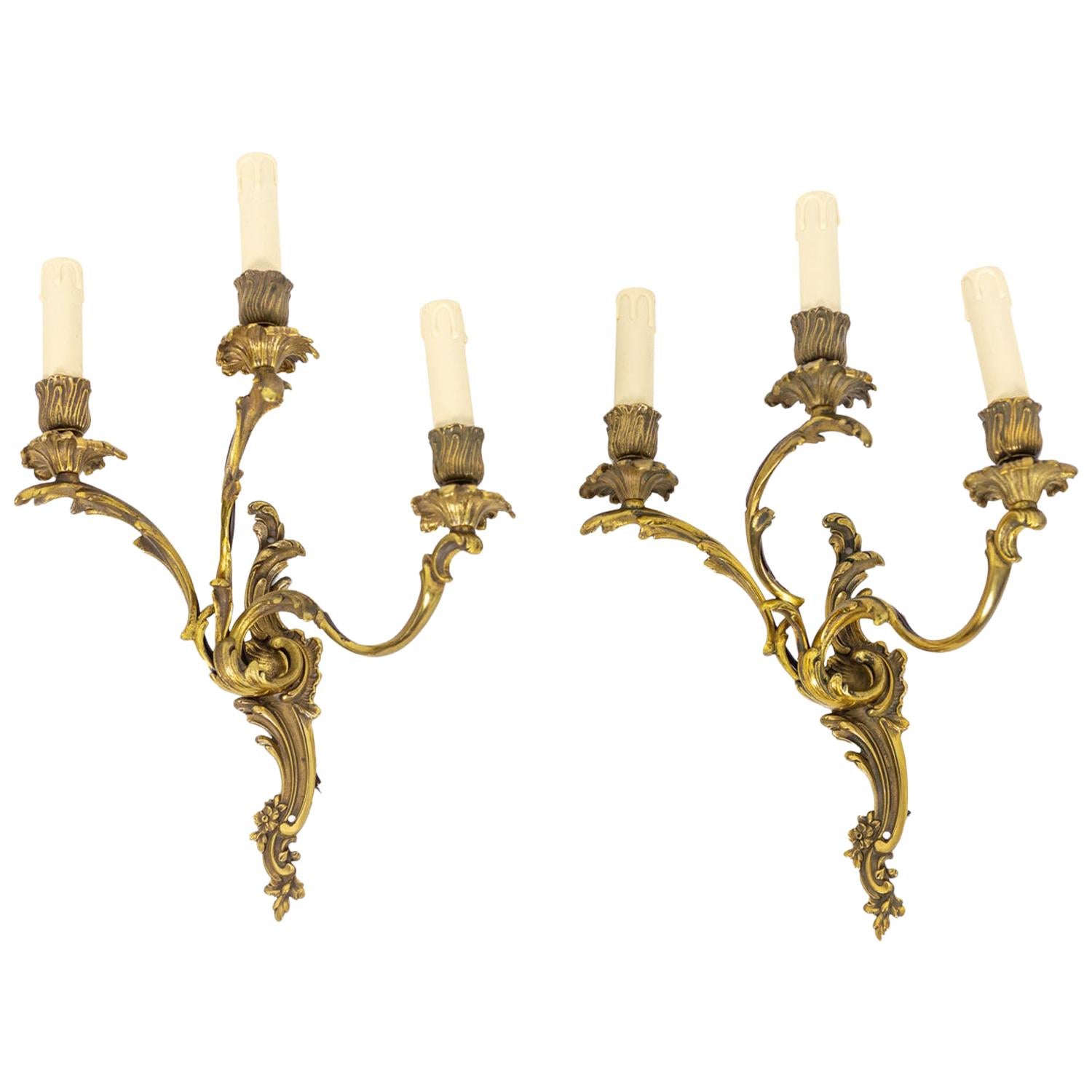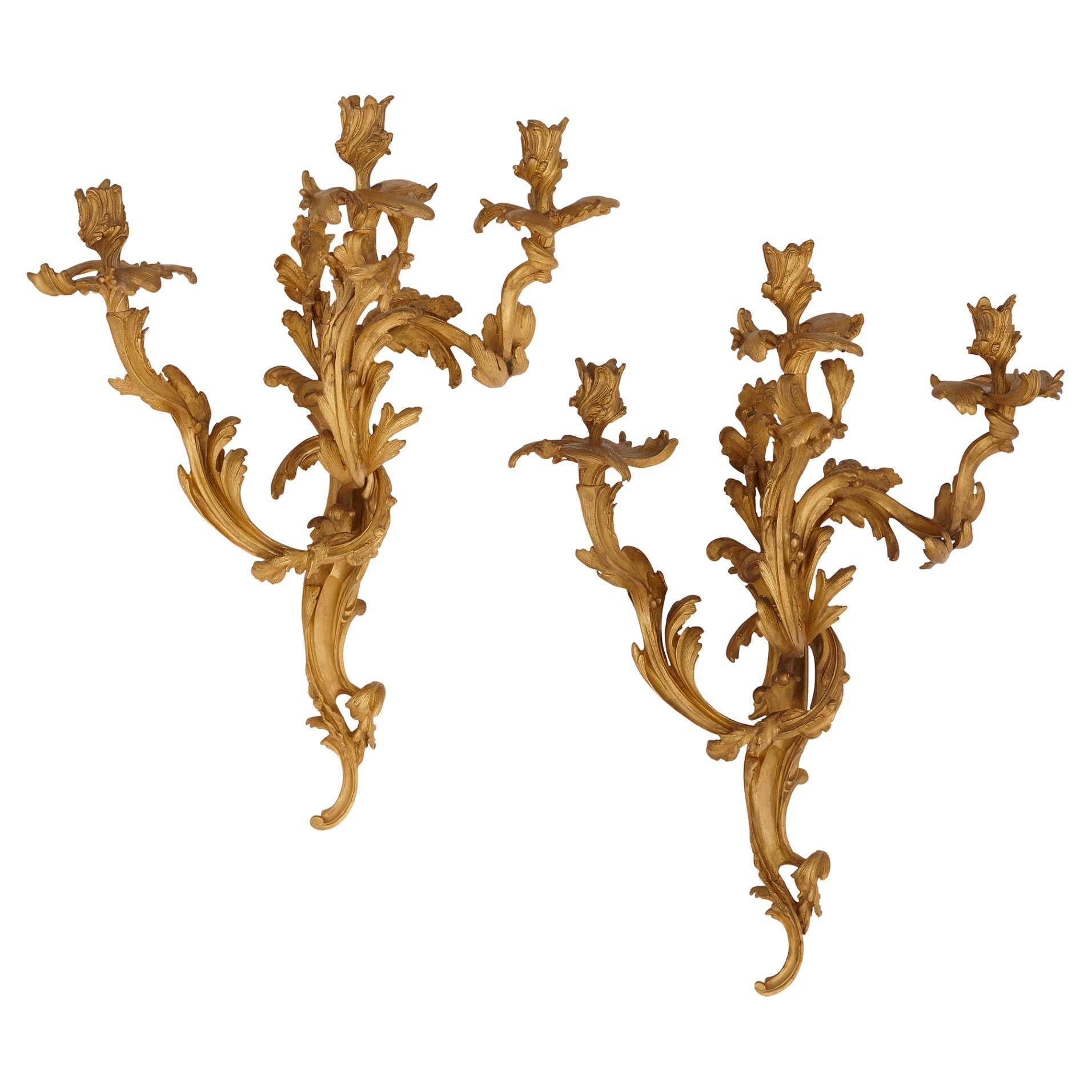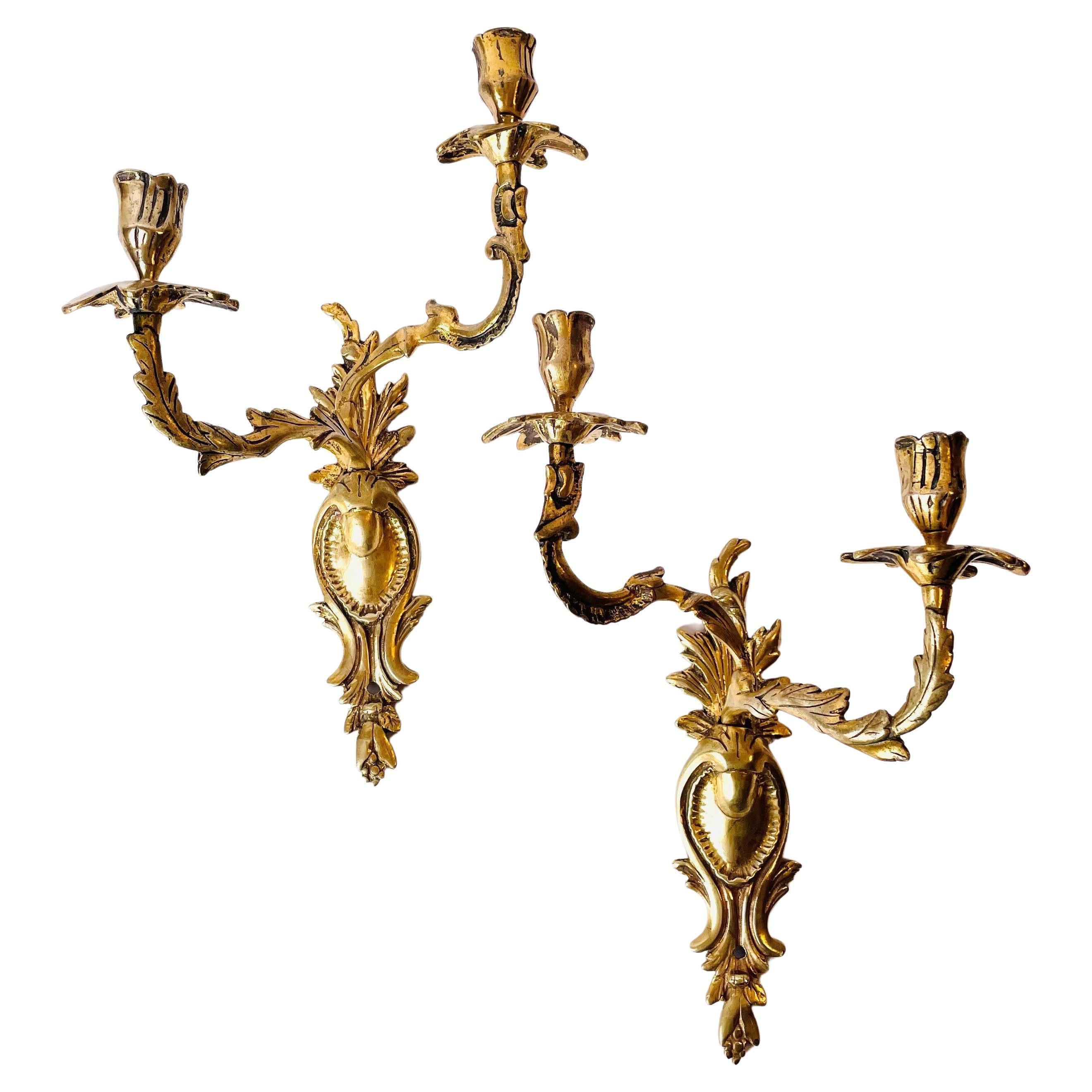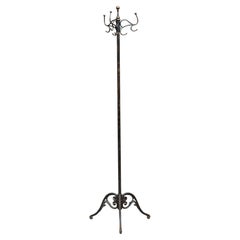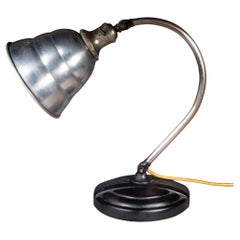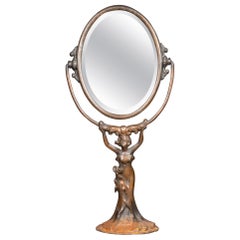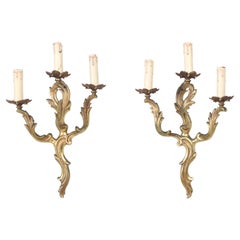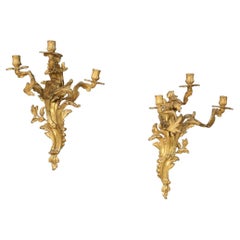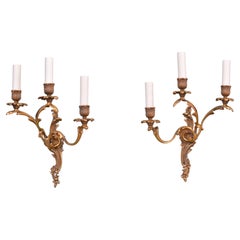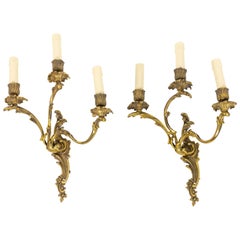Items Similar to Pair of Gilt Bronze Sconces, French, Circa 1880-1900
Want more images or videos?
Request additional images or videos from the seller
1 of 10
Pair of Gilt Bronze Sconces, French, Circa 1880-1900
$625
$79521% Off
£474.50
£603.5621% Off
€543.76
€691.6621% Off
CA$887.10
CA$1,128.4021% Off
A$967.61
A$1,230.8021% Off
CHF 508.31
CHF 646.5721% Off
MX$11,706.06
MX$14,890.1121% Off
NOK 6,359.11
NOK 8,088.7921% Off
SEK 6,004.26
SEK 7,637.4221% Off
DKK 4,058.79
DKK 5,162.7821% Off
About the Item
PAIR OF GILT-BRONZE SCONCES, LATE 19TH/EARLY 20TH CENTURY each sconce of scrolling foliate design with a pair of extended foliate arms.
- Dimensions:Height: 15.5 in (39.37 cm)Width: 13.5 in (34.29 cm)Depth: 8.5 in (21.59 cm)
- Style:Rococo (Of the Period)
- Materials and Techniques:
- Place of Origin:
- Period:
- Date of Manufacture:1880-1900
- Condition:Wear consistent with age and use.
- Seller Location:San Francisco, CA
- Reference Number:Seller: Architectural SKU 0211stDibs: LU1280242694232
About the Seller
5.0
Vetted Professional Seller
Every seller passes strict standards for authenticity and reliability
Established in 2014
1stDibs seller since 2015
1,338 sales on 1stDibs
Typical response time: <1 hour
- ShippingRetrieving quote...Shipping from: San Francisco, CA
- Return Policy
Authenticity Guarantee
In the unlikely event there’s an issue with an item’s authenticity, contact us within 1 year for a full refund. DetailsMoney-Back Guarantee
If your item is not as described, is damaged in transit, or does not arrive, contact us within 7 days for a full refund. Details24-Hour Cancellation
You have a 24-hour grace period in which to reconsider your purchase, with no questions asked.Vetted Professional Sellers
Our world-class sellers must adhere to strict standards for service and quality, maintaining the integrity of our listings.Price-Match Guarantee
If you find that a seller listed the same item for a lower price elsewhere, we’ll match it.Trusted Global Delivery
Our best-in-class carrier network provides specialized shipping options worldwide, including custom delivery.More From This Seller
View AllAntique Japanned Copper Coat Rack c.1880
Located in San Francisco, CA
ABOUT
Late Victorian Japanned copper coat rack with ornate metalwork.
CREATOR Unknown.
DATE OF MANUFACTURE c.1880-1900.
MATERIALS AND TECHNIQUES Steel, Wrought Iron, C...
Category
Early 20th Century American Victorian Coat Racks and Stands
Materials
Brass, Steel, Iron
Antique Articulating Art Deco General Electric Table Lamp or Sconce c.1920
Located in San Francisco, CA
ABOUT
An antique articulating Art Deco industrial lamp with cast iron base, nickel plated stem and socket, aluminum shade and new gold, fabric cord. Can be used as a table lamp or a...
Category
Early 20th Century Industrial Wall Lights and Sconces
Materials
Aluminum, Iron, Nickel
$385 Sale Price
30% Off
Art Nouveau Copper Vanity Mirror c.1920
Located in San Francisco, CA
ABOUT
Early 20th century vanity beveled oval mirror featuring a swivel top and a copper pedestal figure of a woman holding the frame of the mirror.
Shown with life size hand model....
Category
Early 20th Century French Art Nouveau Wall Mirrors
Materials
Copper
Mid-Century PMC Brass Horse Bookends. C.1970
By Philadelphia Manufacturing Company
Located in San Francisco, CA
A pair of brass plated brass horse bookends.
Original felt and lables.
Made by Philadelphia Manufacturing Co. (PMC)
Good condition: no chips.
Category
Mid-20th Century American Industrial Bookends
Materials
Brass
Bronze and Copper Plated Trojan Horse Bookends/Pipe Rests c.1930
Located in San Francisco, CA
ABOUT
An original pair of Art Deco bronze and copper plated Trojan horse bookends with pipe rests. Original labels on each.
CREATOR Metal Corp. of America, Hollywood, CA.
...
Category
Early 20th Century Art Deco Bookends
Materials
Bronze, Copper
Mid-century Chrome and Gold Ceramic Flush Mount c.1960
By Thomas Industries, Moe Lighting
Located in San Francisco, CA
ABOUT
Mid-century flush mount light fixture. Chrome and gold ceramic inlay body with three frosted globes.
CREATOR Moe Lighting for Thomas Industries.
DATE OF MANUFACTURE...
Category
Mid-20th Century American Mid-Century Modern Flush Mount
Materials
Chrome
$795 Sale Price
20% Off
You May Also Like
Antique Pair of French Gilt Bronze Louis XV or Rococo Style Sconces c1900-1920
Located in Chicago, IL
Antique Pair of French Bronze Louis XV or Rococo Style Sconces with two candelabra size bulbs each, circa 1880-1920. The French Rococo or Louis XV style Bronze Sconces have been Gild...
Category
Vintage 1910s French Louis XV Wall Lights and Sconces
Materials
Gold Plate, Bronze
Pair of 20th Century Gilded Bronze French Wall Lights, 1950s
Located in Vicoforte, Piedmont
Pair of 20th century French wall lamps. Louis XV style objects in gilded and chiseled bronze of beautiful size and pleasant decor. Wall lights to be fixed to the wall with three arms...
Category
Vintage 1950s French Louis XV Wall Lights and Sconces
Materials
Bronze
Pair of antique French gilt brass Rococo wall lights
Located in Castle Douglas, GB
Pair of gilt brass Rococo wall lights
Gilt brass three arm lights in the Rococo style, a mirrored pair with S-scroll foliate wall plates, bobeche and candle holders.
French, circa 19...
Category
Early 20th Century French Rococo Wall Lights and Sconces
Materials
Brass
$1,302 / item
Pair of Louis XV Style Wall Sconces in Gilt Bronze, 1950s
Located in Saint-Ouen, FR
Pair of Louis XV style wall sconces in gilt bronze with three fires. Agrafe decor on which are fixed three scroll shape branches. Cups and bobeches decorated with acanthus leaves.
...
Category
Vintage 1950s European Louis XV Wall Lights and Sconces
Materials
Bronze
Pair of Antique French Gilt Bronze Sconces in the Baroque Style
Located in London, GB
Pair of antique French gilt bronze sconces in the Baroque style
French, late 19th century
Measures: Height 61cm, width 39cm, depth...
Category
Antique Late 19th Century French Baroque Wall Lights and Sconces
Materials
Ormolu
Pair of Appliques in Gilt Bronze, Rococo, Mid-18th Century
Located in Knivsta, SE
A beautiful pair of Appliques in gilt bronze, Rococo from mid-18th century.
Some wear on the original gilding (see pictures), but the overall impression of these 270 years old app...
Category
Antique Mid-18th Century European Rococo Candle Sconces
Materials
Gold Plate, Bronze
More Ways To Browse
Antique Bronze French Sconces
Pair Of French Candle Sconces
Antique Bronze Candle Sconces
Rococo French Candle
Wall Hanging Candle Holder
Albe Furniture
Wall Cherub Candle Holders
Hurricane Candle Sconce
Cast Iron Candle Sconce
Handkerchief Holder
Pieter Spruyt
Vintage Syroco Wall Sconces
Wrought Iron Heart Shaped Candle Holder
Cobra Candle Wall
Farmhouse Wall Sconce
Handheld Lantern
Louis C Marks
Vaino Hamara
